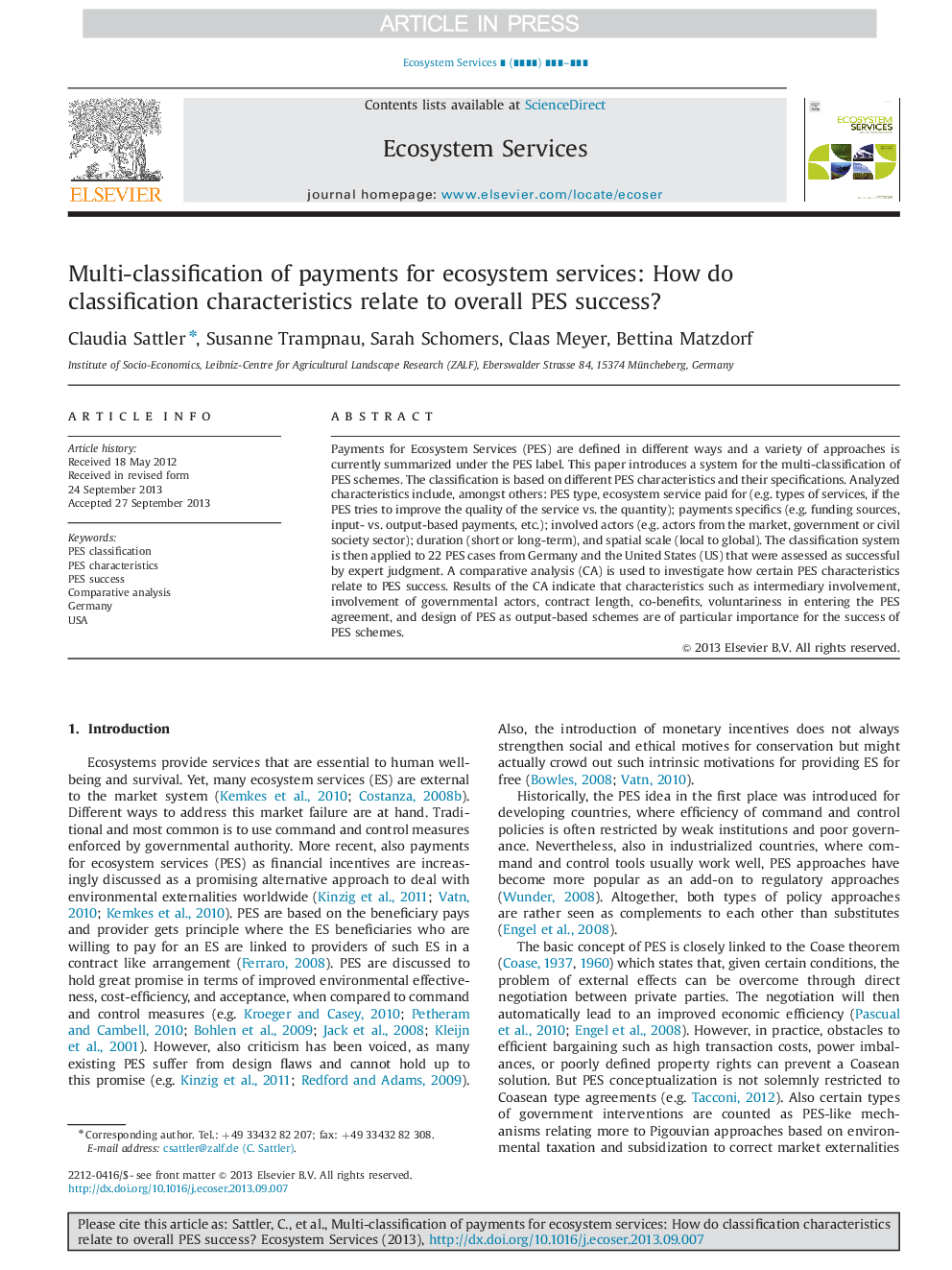| Article ID | Journal | Published Year | Pages | File Type |
|---|---|---|---|---|
| 6556947 | Ecosystem Services | 2013 | 15 Pages |
Abstract
Payments for Ecosystem Services (PES) are defined in different ways and a variety of approaches is currently summarized under the PES label. This paper introduces a system for the multi-classification of PES schemes. The classification is based on different PES characteristics and their specifications. Analyzed characteristics include, amongst others: PES type, ecosystem service paid for (e.g. types of services, if the PES tries to improve the quality of the service vs. the quantity); payments specifics (e.g. funding sources, input- vs. output-based payments, etc.); involved actors (e.g. actors from the market, government or civil society sector); duration (short or long-term), and spatial scale (local to global). The classification system is then applied to 22 PES cases from Germany and the United States (US) that were assessed as successful by expert judgment. A comparative analysis (CA) is used to investigate how certain PES characteristics relate to PES success. Results of the CA indicate that characteristics such as intermediary involvement, involvement of governmental actors, contract length, co-benefits, voluntariness in entering the PES agreement, and design of PES as output-based schemes are of particular importance for the success of PES schemes.
Keywords
Related Topics
Life Sciences
Agricultural and Biological Sciences
Agricultural and Biological Sciences (General)
Authors
Claudia Sattler, Susanne Trampnau, Sarah Schomers, Claas Meyer, Bettina Matzdorf,
